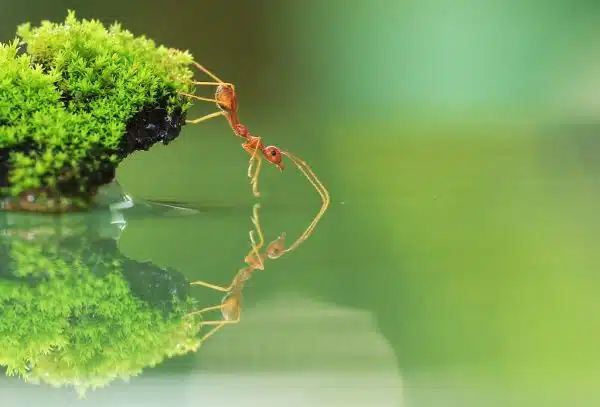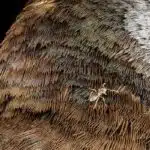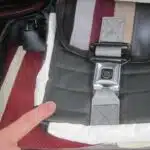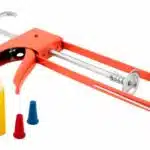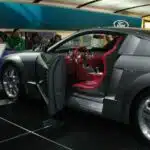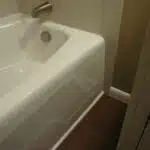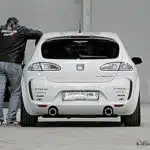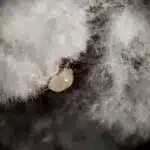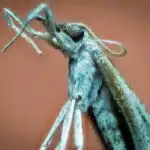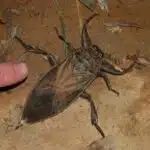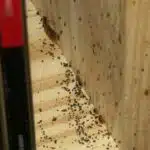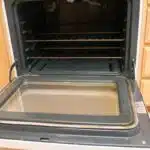Ants are a common problem in vehicles, and their presence can be both frustrating and unsanitary. Ants are attracted to food scraps, crumbs, and spilled beverages, making cars an ideal location for them to set up camp. While ants may not cause significant damage to your car, they can make driving uncomfortable and unhygienic. Therefore, it is essential to take measures to get rid of ants in your car.
As an entomologist or exterminator, it is crucial to understand the behavior of ants and their preferred habitats. Ants are social insects that live in colonies and have a hierarchy within them. The queen ant is responsible for reproduction while the worker ants collect food and care for the young. Ants communicate with each other through pheromones, which help them establish food trails and locate new sources of food. In this article, we will discuss effective methods for getting rid of ants in your car by disrupting their communication and removing food sources.
Identifying The Type Of Ants In Your Car
Ants can be a nuisance in any environment, and cars are no exception. Identifying the type of ants that have infiltrated your vehicle is crucial to effectively eliminating them. Ant identification techniques include examining their size, shape, color, and behavior. Common ant species found in cars include pavement ants, pharaoh ants, Argentine ants, odorous house ants, and carpenter ants.
Pavement ants are small (about 1/8 inch) and brown-black in color with parallel lines on their head and thorax. Pharaoh ants are even smaller (1/16 inch), yellow or light brown in color, and have two nodes at the waist. Argentine ants are slightly larger (1/8 inch), shiny brown-black in color, and form large colonies. Odorous house ants are similar in size to pavement ants but are dark brown to black with a distinct odor when crushed. Carpenter ants are large (1/4 to 1/2 inch), black or red in color with a rounded thorax.
Determining the type of ant infestation is important because each species has unique behavior patterns that affect how they should be eliminated. For example, some species may require bait stations while others may require direct application of insecticides. In addition to identifying the ant species present in your car, it’s also important to locate their entry points into your vehicle as this can help prevent future invasions.
Understanding Ant Behavior And Habits
After identifying the type of ants in your car, it is important to understand their behavior and habits. Ants are social insects that live in large colonies with a complex structure. They communicate with each other using chemicals called pheromones, which allow them to recognize their nestmates, locate food sources and trail other ants to those sources.
Ants have a hierarchical structure within their colony. The queen ant is responsible for laying eggs and maintaining the colony’s population. Workers, on the other hand, are responsible for finding food, caring for the young and maintaining the nest. Understanding this social structure is crucial when trying to eliminate an ant infestation in your car.
To effectively get rid of ants in your car, it is important to disrupt their communication and find their nest. Here are some tips on how to do this:
- Clean your car thoroughly: Ants are attracted to food particles and crumbs left in your car. Vacuuming and wiping down surfaces can help eliminate these attractants.
- Use ant baits: Ant baits contain a slow-acting poison that workers take back to their nest and share with other ants, eventually killing the colony.
- Follow ant trails: If you see ants moving in a line, follow them as they may lead you to their nest.
By understanding ant behavior and using effective elimination methods such as disrupting communication and finding the nest, you can successfully get rid of ants in your car. In the next section, we will discuss how to locate the ant nest in your car.
Finding The Ant Nest In Your Car
Ants are social insects that work together to build their nests. These nests can be found in various locations, including inside your car. To locate the ant nest in your car, you need to follow the trail of ants. Ants leave pheromone trails that lead back to their nest, and following these trails can help you find where they are coming from.
Once you have located the ant nest in your car, you can begin to take steps to remove it. There are several DIY removal techniques that you can try, including using vinegar or borax to kill the ants and destroy their nest. However, it is important to note that these methods may not be effective for larger infestations.
If you are dealing with a large ant infestation in your car, it may be best to seek professional help from an exterminator. A professional exterminator will be able to identify the species of ant that is causing the problem and use targeted treatments to eliminate them. Additionally, they will be able to advise you on how to prevent future ant infestations in your car.
Transition: Now that you have located the ant nest in your car and taken steps to remove it, the next step is to clear out any food sources that may be attracting ants.
Clearing Out Food Sources
Ant prevention is the key to keeping your car free from an infestation. If you have a habit of eating in your car, it’s important to clean up any leftover crumbs or food immediately after eating. Even the smallest of crumbs can attract ants and other pests to your vehicle. Cleaning out your car regularly and disposing of any trash can also help prevent ant infestations.
Food storage solutions can be utilized in order to prevent ants from entering your car altogether. Consider storing snacks and other foods in airtight containers or bags, making sure that they are properly sealed. This will not only keep the food fresh for longer but also make it less likely for ants to detect them. Furthermore, it is recommended that you avoid leaving any sugary drinks or foods inside your vehicle, as these tend to attract ants.
If you continue experiencing ant problems despite taking preventative measures, it may be time to call in a professional exterminator. An exterminator will be able to identify the source of the infestation and provide effective treatments that eliminate both the ants and their colonies. In addition, they can advise you on specific ant prevention methods tailored to your unique situation, ensuring that you remain ant-free in the long term.
It’s important to remember that simply getting rid of the existing ant population won’t solve the problem if there are still food sources within your vehicle. Therefore, once you have taken preventative measures and eliminated any existing infestations, regular cleaning and maintenance should become part of your routine. The next step is vacuuming the interior of your car thoroughly, which will help remove any remaining debris or crumbs that could attract more ants into your vehicle.
Vacuuming The Interior Of Your Car
To completely get rid of ants in your car, removing food sources is not enough. You will also need to vacuum the interior of the car thoroughly. Ants can leave behind pheromone trails that attract more ants, even if there are no longer any food sources present.
Vacuuming your car has many benefits aside from eliminating ant infestations. It helps get rid of debris and dirt that can accumulate in the vehicle over time. This improves the overall cleanliness of the car and prevents odors from building up. Moreover, regular vacuuming can help extend the lifespan of your car’s upholstery by removing abrasive particles that can cause damage.
When choosing a vacuum for cleaning your car, consider its size and power. A handheld vacuum is usually sufficient for cleaning the interior of a car, but you may opt for a corded or cordless model depending on your preferences. Look for models with good suction power and attachments like crevice tools and upholstery brushes to make cleaning easier.
- A clean car interior makes driving more enjoyable.
- Vacuuming extends the life of your upholstery.
- Regular cleaning helps prevent bad odors.
- Cleaning is a satisfying task that promotes well-being.
In summary, vacuuming is an essential step in getting rid of ants in your car because it removes pheromone trails left behind by previous ant colonies. Additionally, regular vacuuming keeps your vehicle clean and odor-free while extending the life of its upholstery. When choosing a vacuum cleaner for your car, consider its size and power as well as accessories like crevice tools and upholstery brushes to make cleaning easier. Next up, we’ll discuss how to use insecticides to eliminate any remaining ants in your vehicle.
Spraying Insecticide
As the ant population in your car grows, it may be necessary to resort to more aggressive measures such as spraying insecticide. This method involves using chemicals that are specifically designed to kill ants and other insects. While it can be effective in eliminating the infestation, there are both pros and cons to consider before using this approach.
One of the advantages of using insecticide is that it can quickly eliminate a large number of ants in your car. This method is also relatively easy to use and does not require a lot of effort on your part. However, there are also some safety measures that should be taken when using insecticide. It is important to wear protective clothing and gloves when handling these chemicals, as they can be harmful if they come into contact with your skin or eyes.
In addition to protecting yourself from harm, it is also important to consider the potential impact of insecticide on the environment. Some types of insecticides may be harmful to other animals or plants in the area surrounding your car. Before using insecticide, you should research the specific type you plan to use and ensure that it is safe for both you and the environment. If you decide that spraying insecticide is the best option for getting rid of ants in your car, be sure to follow all safety guidelines and take steps to minimize any potential negative impacts on the environment.
When considering how to get rid of ants in your car, using ant baits can be an effective alternative to spraying insecticide. These baits contain a slow-acting toxin that ant workers will bring back to their colony, eventually killing off the entire colony over time. In the next section, we will explore how ant baits work and provide tips for effectively using them in your car without causing harm or damage.
Using Ant Baits
Ant baits are an effective method of controlling ant infestations in vehicles. These bait stations contain a slow-acting poison that the ants will take back to their colony, eventually killing off the entire population. Ant baits come in different forms, such as gels or traps, and can be purchased at most hardware stores.
It is important to note that ant bait effectiveness may vary depending on the species of ant present in your vehicle. For example, some ants may not be attracted to certain types of bait or may require a higher concentration of poison to be effective. Additionally, it may take several days or even weeks for the bait to have its full effect, so patience is key when using this method.
While ant baits are generally a reliable choice for controlling ant infestations in vehicles, there are alternative methods available. These include using natural repellents like vinegar or essential oils, vacuuming up any visible ants and nests, and sealing off any cracks or openings where ants may be entering the vehicle. It is recommended to try these methods first before resorting to chemical solutions such as ant baits.
To further combat an ant infestation in your car, applying diatomaceous earth can be an effective approach. Diatomaceous earth is a fine powder made from fossilized algae that works by dehydrating insects upon contact. By sprinkling this powder around areas where ants are commonly seen (such as floor mats or cupholders), you can effectively deter them from returning without using harmful chemicals.
Applying Diatomaceous Earth
As ants can easily enter and make their nests in cars, the use of diatomaceous earth may be a helpful solution to get rid of these pesky insects. Diatomaceous earth is made up of fossilized remains of diatoms, microscopic algae that have hard silica shells. It is readily available at hardware stores and online retailers.
One benefit of using diatomaceous earth is that it kills ants by dehydrating them. When the powder comes into contact with the ant’s exoskeleton, it absorbs its moisture and oils, leading to death by dehydration within 48 hours. Moreover, it is a safe and non-toxic way to eliminate ants without harming pets or humans. However, precautions should still be taken when applying diatomaceous earth, such as wearing gloves and avoiding inhaling the dust.
To apply diatomaceous earth in your car, follow these steps:
- Sprinkle a small amount of the powder along cracks or crevices where you’ve seen ant activity.
- Leave the powder undisturbed for a few days before vacuuming it up.
- Repeat the process if necessary until all ants are eliminated.
- Store any remaining diatomaceous earth in an airtight container for future use.
Using diatomaceous earth can be an effective method for getting rid of ants in your car without resorting to harmful chemicals. However, it’s important to handle it with care and follow proper safety precautions when using it. In the next section, we’ll explore another natural method for repelling ants – using essential oils.
Using Essential Oils As A Natural Ant Repellent
After applying diatomaceous earth, another effective way to get rid of ants in your car is by using essential oils as a natural ant repellent. Essential oils have been used for centuries for various purposes, including pest control. Using essential oils not only eliminates ants but also has numerous benefits, such as being environmentally friendly and safe for humans and pets.
There are different types of essential oils that work well as ant repellents, such as peppermint oil, tea tree oil, and lemon oil. Peppermint oil has a strong scent that ants find repulsive, while tea tree oil contains compounds that disrupt the ants’ nervous system. Lemon oil contains D-limonene, which damages the ants’ exoskeletons, leading to their death. You can make your DIY essential oil ant repellent by mixing a few drops of your preferred essential oil with water and spraying it on areas where you frequently see ants.
Using essential oils as a natural ant repellent is an excellent way to keep your car free from pests without harming the environment or risking exposure to toxic chemicals. When you use natural methods like this one, you’re not only protecting yourself but also helping preserve the planet’s health. So next time you see ants crawling around in your car, consider using essential oils instead of chemical-based sprays.
Regularly cleaning your car is an important step in keeping it free from pests like ants. Ants are attracted to food crumbs and spills left behind in your vehicle. By cleaning up after yourself and wiping down surfaces regularly with soap and water or vinegar solution, you can discourage ants from making themselves at home in your car. Remember that prevention is key when it comes to pest control, so take proactive measures like these to keep unwanted visitors out of your vehicle.
Cleaning Your Car Regularly
Many car owners tend to neglect the importance of regular cleaning, which can lead to various issues such as the infestation of ants. Cleaning your car regularly is an essential step towards preventing ant infestations and other insect-related problems. By keeping it tidy, you eliminate possible food sources for these pests, making it less attractive for them to invade.
Furthermore, maintaining a clutter-free environment in your car has several benefits. Firstly, it creates a pleasant and comfortable atmosphere that can enhance your driving experience. Secondly, it reduces the risk of accidents caused by distractions from misplaced items or cluttered spaces. Thirdly, it prevents unpleasant odors and bacteria buildup that can pose health risks to passengers.
To keep your car clean and free from ants or any other pests, here are some tips you should follow:
- Remove all trash and debris regularly.
- Vacuum the carpets and seats to eliminate any crumbs or food particles.
- Use disinfectants to clean surfaces where spills have occurred.
- Clean out cup holders and storage areas regularly.
By following these simple steps, you can maintain a clean and hygienic vehicle while preventing ant infestations. However, keeping your car clean is not enough; there are other measures you need to take to ensure that ants do not find their way into your vehicle through cracks or openings.
Sealing Cracks And Openings In Your Car
- It is important to inspect the interior and exterior of your vehicle for any gaps, cracks, or openings that could allow pests such as ants to enter.
- Once these areas have been identified, it is necessary to seal the cracks with a flexible sealant such as caulk in order to prevent any further entry of the ants.
- The caulk should be applied to the entire area of the gap, ensuring that it is sealed completely.
- It is important to use a caulk that is designed for outdoor use, as this will provide the best protection against moisture and extreme temperatures.
- The caulk should also be applied in several thin layers, ensuring that each layer fully adheres to the surface before applying the next.
- Once the caulk has been applied, it is important to inspect it regularly for any signs of wear or damage that may require reapplication.
Inspecting For Gaps
When inspecting for gaps in your car, it is important to have a keen eye for detail. Checking for gaps can be a tedious process, but it is necessary to ensure that ants cannot enter your car. Start by examining the exterior of the vehicle and take note of any cracks or openings that could serve as entryways for ants.
Next, move on to the interior of the car and carefully examine all crevices and corners. Look for gaps around windows, doors, and vents – these are common entry points for ants. Once you have identified all potential entryways, it’s time to start sealing them up.
Sealing cracks and openings in your car is crucial in preventing ants from infesting your vehicle. Use silicone caulk or weather stripping to seal off any gaps you have identified during inspection. This will not only keep ants out, but also other unwanted pests. With proper sealing techniques, you can enjoy a pest-free ride without having to worry about pesky ants crawling around your car.
Sealing Cracks
When it comes to keeping ants out of your car, sealing cracks and openings is a crucial step. Ants can enter even the smallest of gaps, so it’s important to be thorough in your inspection for potential entryways. Once you have identified these gaps, using caulk or weather stripping is an effective way to seal them off.
When using caulk for cracks, it’s important to choose the right type for your specific needs. Silicone caulk is a popular choice for sealing gaps in cars because it is durable and flexible. It also adheres well to a variety of surfaces, making it easy to use in different parts of your vehicle. Taping gaps can also be effective in some cases, but it is generally not as long-lasting as using caulk.
Sealing cracks and openings in your car not only keeps ants out, but also other pests like spiders and roaches. This not only helps prevent infestations but also ensures that you have a clean and comfortable ride. By taking the time to carefully inspect and seal off any potential entryways, you can enjoy a pest-free vehicle that is free from unwanted visitors.
Applying Caulk
Sealing cracks and openings in your car is a crucial step to prevent ants and other pests from entering your vehicle. One effective method to seal these gaps is by using caulking techniques. Caulking materials can be used to fill the gaps, ensuring that they are completely sealed off from any potential entryways.
When applying caulk, it’s important to choose the right material for the job. Silicone caulk is a popular choice because of its durability and flexibility. It adheres well to different surfaces, making it easy to use in various parts of your car. To apply, simply insert the caulk into the crack or gap using a caulking gun or similar tool, then smooth it out with a putty knife or your finger.
To ensure that your car remains pest-free, it’s important to inspect all areas where pests might enter. This includes windows, doors, vents, and any other areas where there may be gaps or cracks. By taking the time to carefully apply caulk in these areas, you can effectively seal off any potential entryways and enjoy a clean and comfortable ride without any unwanted visitors.
Keeping Your Car Dry
One of the most effective ways to prevent ants from entering your car is to keep it dry. Ants are attracted to moisture and are more likely to set up camp in areas that have high humidity levels. Using a dehumidifier in your car can help reduce the amount of moisture in the air, making it less appealing for ants to inhabit. Additionally, a dehumidifier has many benefits beyond ant prevention, such as improving air quality and reducing the likelihood of mold growth.
Another way to keep your car dry is by regularly cleaning it. Dirt and debris can trap moisture, which can attract ants and other pests. By keeping your car clean, you reduce the chances of any moisture buildup that could lure in unwanted visitors. Regularly vacuuming and wiping down surfaces with a dry cloth can go a long way in preventing ant infestations.
Incorporating these preventative measures into your routine can save you time and money down the line by avoiding costly extermination services or repairs caused by pest damage. By keeping your car dry and clean, you’ll not only be protecting your vehicle but also doing your part in preventing any further spread of ant colonies.
Transition: While keeping your car dry is one way to prevent ants from making themselves at home, another important step is storing food properly within your vehicle.
Storing Food Properly In Your Car
As we have discussed in the previous section, keeping your car dry is essential to prevent ant infestations. However, another important factor to consider is proper food storage in your vehicle. Ants are attracted to any kind of food source and even the tiniest crumbs can invite them into your car. Therefore, it is crucial to store any food items securely and safely.
To prevent ants from entering your car, you should ensure that all food items are stored properly in sealed containers. Avoid leaving any open or uncovered food items inside your vehicle, as this will attract these pesky pests. It is also advisable to clean up any spills or crumbs immediately and dispose of any garbage properly.
Furthermore, it is recommended to regularly inspect and clean the interior of your car. This includes wiping down surfaces and vacuuming out any debris that might attract ants. By following these simple steps, you can significantly reduce the chances of an ant infestation in your car and ensure a pleasant driving experience for yourself and others on the road.
If despite taking all preventive measures you still find yourself dealing with an ant problem in your car, it may be time to seek professional help. An experienced exterminator can assess the severity of the infestation and provide appropriate treatment options to eradicate these unwanted guests from your vehicle. Remember that early intervention is key when dealing with pest problems, so don’t hesitate to seek help as soon as possible.
Seeking Professional Help
While there are a variety of home remedies and commercial products that can be used to try and eliminate ants in your car, seeking professional help may be the most effective solution. Professional exterminators have the expertise and experience to identify the type of ant infestation you are dealing with and determine the best course of treatment. They also have access to stronger and more effective pesticides that may not be available over-the-counter.
One of the benefits of seeking professional help is that it can actually be more cost-effective in the long run. While DIY methods may seem cheaper upfront, they often require repeated treatments or multiple products that add up in cost. In contrast, a professional exterminator can typically eliminate the ant infestation with one or two treatments, saving you time and money in the long run.
Another advantage of hiring a professional is their ability to prevent future ant infestations. They can inspect your car thoroughly for any entry points or areas that may attract ants, such as food crumbs or spills. By identifying and addressing these issues, they can help ensure that your car remains ant-free in the future.
In summary, while there are various DIY methods available for getting rid of ants in your car, seeking professional help from an experienced exterminator has numerous benefits. Not only is it likely to be more effective at eliminating the problem quickly and efficiently, but it can also save you money in the long run by addressing the issue once and for all. Additionally, professionals have knowledge on how to prevent future infestations through thorough inspections and recommendations for preventative measures.
Preventing Ant Infestations In The Future
Following the necessary steps to resolve an ant infestation in your car, you may need to seek professional help from an exterminator or pest control service. These professionals have the expertise and tools required to eliminate ants effectively. Additionally, they can provide guidance on how to prevent future infestations.
Preventing infestations is key to keeping ants out of your car in the long term. One effective way to do this is by maintaining cleanliness in and around your vehicle. Ants are attracted to food and water sources, so make sure to clean up any spills or crumbs immediately. Additionally, regularly wiping down surfaces and vacuuming can help remove any potential ant nesting sites.
To further prevent ant infestations, it’s important to seal any entry points that ants may use to gain access to your car. This includes checking for cracks or gaps in the windows, doors, and undercarriage of the vehicle. By taking these preventative measures, you can avoid future costly and frustrating ant invasions.
| Negative Effects of Ant Infestations | Emotional Response |
|---|---|
| Damage to car components | Frustration |
| Risk of food contamination | Disgust |
| Decreased resale value | Anxiety |
| Potential health hazards | Concern |
By following these tips and implementing preventative measures, you can effectively eliminate ants from your car while also ensuring they don’t return in the future. Maintaining cleanliness in and around your vehicle is crucial for preventing ant infestations, as well as sealing off any possible entry points for these pesky pests. Remembering these strategies will help keep your vehicle free from unwanted intruders and preserve its value over time.
Conclusion
Ant infestations in cars can be a frustrating problem to deal with, but understanding the behavior and habits of ants can help eliminate them. Identifying the type of ant present in your car is crucial, as different species may require different methods of removal. Once located, it is important to clear out any food sources and vacuum the interior of your car thoroughly. Keeping the car dry and storing food properly can also prevent future infestations.
In addition to these measures, seeking professional help may be necessary for severe infestations. It is important to take preventative measures to avoid future ant invasions, such as regularly cleaning out your car and avoiding leaving food or trash inside. As an exterminator, it is crucial to address ant infestations promptly and effectively to prevent further damage to your vehicle. Just as ants work tirelessly in their colonies, so too must we work diligently in eliminating them from our cars.
Image Credits
- “Red Ant” by Charlie Stinchcomb (featured)

